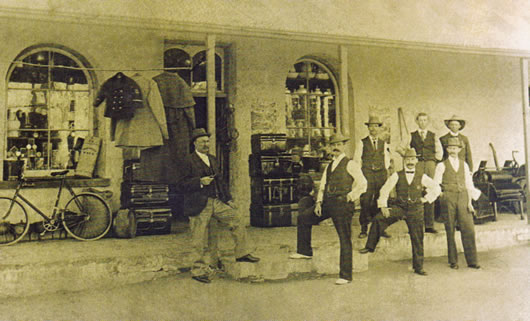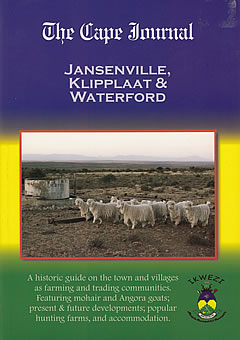Jansenville Town
Monday, 20th November 2017
This little town of Jansenville owes its origins to the Dutch Reformed Church which formed a parish there in 1854 named after the last Dutch Governor of the Cape.
Jansenville is north of the Zuurberg Mountains in an area known as the Noorsveld, after a cactus-like succulent that abounds in the district. Between Jansenville and the Zuurberg to the south is a plain that marks the northern boundary of the Addo National Park, while to the north are some hills which are a scenic drive and, at the summit, shortly before the giddy descent down the Ratelskloof Pass, one has a spectacular view across the Camdeboo plains to the peaks of the Sneeuberg.
Jansenville is game country and there are game farms and hunting concessions in the area as well as nature reserves including the Addo Elephant National Park.
Jansenville has a number of fine buildings, dominated by the large Dutch Reformed Church, a building in the basilican style made of local stone which is a heritage site. The Anglo-Boer War fort north of the town attests to the guerrilla activity in the area in that conflict.
The restored Sid Fourie House serves as a museum. Coupled to an overnight stay in Jansenville the museum offers travelers a welcome and interesting break in their journey through the Karoo Heartland.
A Brief History Of Jansenville
In the late 1700’s, outposts of white civilization in the form of the trek boer and hunters had reached and crossed the Sundays River.
The greater portion of what now constitutes the Janesville district fell under Uitenhage. The first white man to settle here was Christiaan Ernst Schutte, who obtained title to land surveyed by James Swan in June 1818 described as "Late Loan Place Vergenoegd" of 3000 morgen, and granted to C.E. Schutte in 1820.
Schutte was required to pay to “The Receiver General of Land Revenue” an annual quitrent of 50 Rix dollars.
Schutte later sold to Prinsloo and moved northwards, to be followed by the latter when fierce, impetuous Petrus Fourie, arrived from Swellendam in 1838, to become the new owner of Vergenoegd.
His veins flowing with Huguenot industry, Fourie found the land good. The muddy waters of the Sundays spread fertile, alluvial soil along its banks. Fourie and his sons began to cultivate, and before long one hundred morgen were under crops.
The Great North tract passed over Vergenoegd. It was used by hundreds of ox wagons en route to Port Elizabeth, and returning with merchandise.
The transport riders found good pasture and ample provisions in wheat, mealies and meat; the district was becoming populous.
In 1853 Petrus Fourie arranged for layout and survey of about 80 erven for the establishment of a township named Alexandria in honor of Ds. Alexander Smith, NGK Minister at Uitenhage, who visited the congregation once a quarter. However, by the time the application reached the authorities at the Cape, another community near the coast had beaten Fourie to the name. Jansenville was then decided on in honor of General Janssens, last of the Dutch Governors at the Cape, and Commander of the Dutch forces at the fateful Battle of Muizenberg.
This extract was taken from: "The Cape Journal".
A historic street scene in Jansenville.













